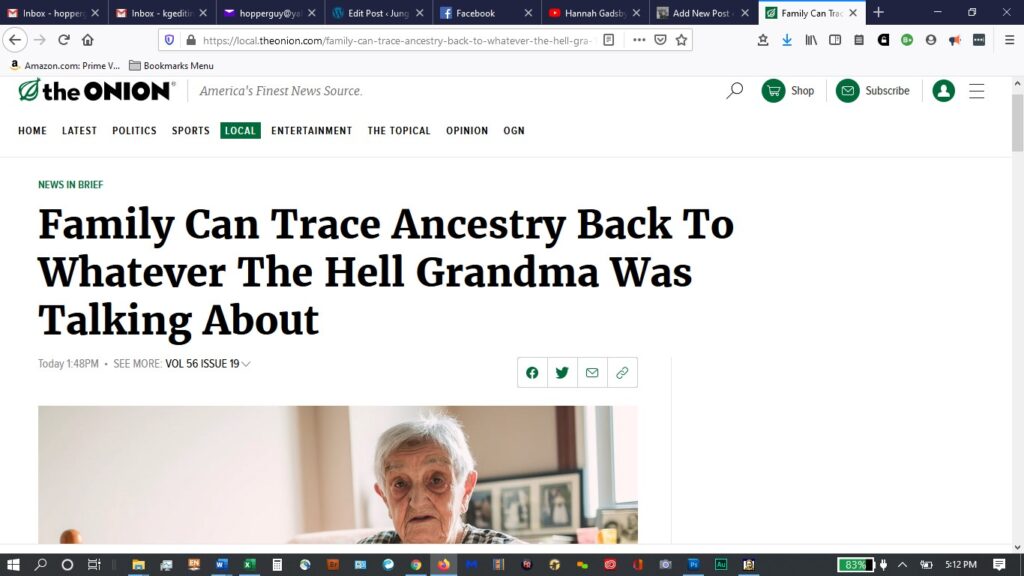Let’s help each other solve mysteries. I’d love to hear from DNA relatives who’ve traced their families back to Dingle Peninsula, County Kerry, Ireland, in the mid-1800s or to Bachmans in Germany / Bohemia / Czech Republic. I can help with what I’ve found in the available records.

What I was told:
“Just go online and look at records.”
What I learned for myself:
Have a goal. That will guide your research.
Along with a general how-to that you can use to guide your genealogy research, I’ll be sharing my genealogy journey as a way to help you see how general advice resulted in specific findings.

There all sorts of online genealogy how to’s. And none of them are right. Or more to the point none of them are exactly right for you. The main thing you need to have when you start is a goal. This goal will dictate what you look for in how you look.
If you’re trying to find your biological father, you can’t start by interviewing his parents. If you’re trying to find a slave ancestor, you can start by just looking them up in the census of 1860 (slave names were often not listed).
I wanted to find out if there was any truth to the family legend that are my original immigrant was one of 3 brothers who came to the United States after being kicked out of Ireland for ringing the church bells.
Was there any truth to the family legend of a woman being run over by a train?
Were any relatives still alive from my grandpa’s generation?
These goals drove how I researched genealogy.
To me, that indicated that I needed to find his family in that generation. And he was 3 or 4 generations before me. And I had to go back one further because I could only prove they were brothers if I knew who their parents were. So I had to go back 5 generations.
Some sites will tell you to dive right in and look for online records. Some people will tell you, “Everything is online now.” That is not true. I had to do a lot of research in libraries and other institutions, and much of the most helpful material came from relatives. That’s why I recommend as Step 1:
Step 1 Interview your oldest living relative(s).
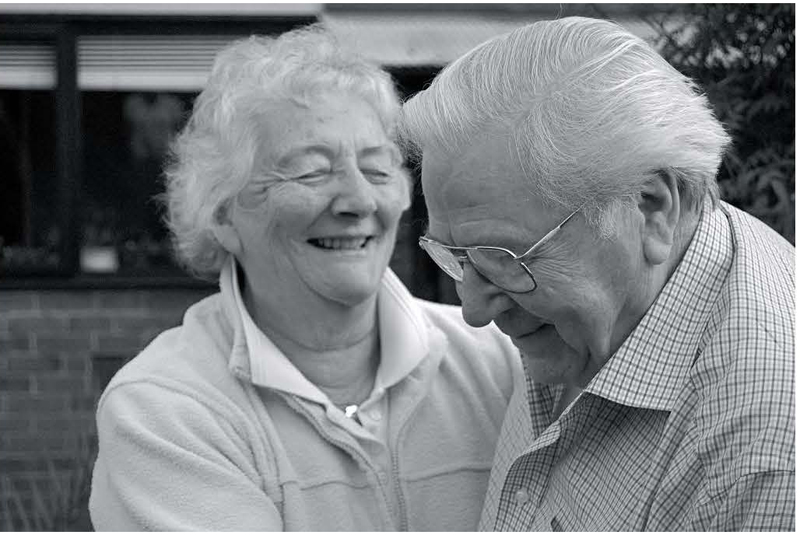 The Internet Before The Internet
The Internet Before The Internet
Archived files will always be there. People won’t. Start by interviewing the oldest relatives you can find. Be sure to include as many family branches as possible. I found that a lot of people will say, “I don’t know anything about family history.” But once they start to think about things and access those memories, more and more will come back. So don’t give up when interviewing (but don’t badger them when they’re tired of talking).
Ask specifics about their relatives, where they lived, occupations, etc. But be sure to ask also about family legends. There usually turns out to be a kernel of truth in those stories, and they often help you make sense of facts you might discover that don’t seem to relate—if you don’t know the legend.
For a list of genealogy questions to ask, click here (UCLA Library Center for Oral History Research).
For a longer list, click here, but you probably want to pick and choose from the extensive list .
Or click here to download a PDF file of it.
Stay tuned for further steps in future posts! Also look for tips I’ve learned on my own.

[right click on images and choose “Open image in new tab” to see original documents]
Abstract
The story of three bothers emigrating together to the United States and being separated upon arrival is so common it is a “red flag” for genealogists.  Through research, I was able to correlate one family’s version of the story to genealogy records. Oral histories often follow scripts or templates that are dismissed because they are widespread and contain elements that can be disproved through records. However, they also may contain details that point genealogists to discoveries, and, in the case presented here, help prove not only family relations but also elements of the legend that were true. Genealogists would do well not to dismiss family legends that follow a familiar story line. In particular, the details and variants in a family’s version of a common legend provide clues for genealogists where to direct their research.
Through research, I was able to correlate one family’s version of the story to genealogy records. Oral histories often follow scripts or templates that are dismissed because they are widespread and contain elements that can be disproved through records. However, they also may contain details that point genealogists to discoveries, and, in the case presented here, help prove not only family relations but also elements of the legend that were true. Genealogists would do well not to dismiss family legends that follow a familiar story line. In particular, the details and variants in a family’s version of a common legend provide clues for genealogists where to direct their research.
I.
The legend of three bothers immigrating together to the United States and being separated upon arrival is so common it is a “red flag” for genealogists.[1],[2],[3]  But oral histories often follow traditional legends’ story structures as a mnemonic aid. As Green puts it, “individuals’ memories conform to dominant cultural scripts or unconscious psychic templates.”[4], p.40 Abram warned that such oral tradition legends that “literates misconstrue as a naïve attempt at causal explanation may be recognized as a sophisticated mnemonic method whereby precise knowledge is preserved and passed along from generation to generation.”[5], p. 121
But oral histories often follow traditional legends’ story structures as a mnemonic aid. As Green puts it, “individuals’ memories conform to dominant cultural scripts or unconscious psychic templates.”[4], p.40 Abram warned that such oral tradition legends that “literates misconstrue as a naïve attempt at causal explanation may be recognized as a sophisticated mnemonic method whereby precise knowledge is preserved and passed along from generation to generation.”[5], p. 121
My family had a version of that story in its lore. My grandfather’s generation said of my original immigrant and great-great-grandfather, John Granfield, “He was one of three brothers kicked out of Ireland for ringing the Catholic Church bells on a Sunday. One went east, one went west, and he ended up here in Cincinnati.” (East and west were sometimes changed to north and south.) Through research, I was able to determine that the legend was “true” to the experience implied by the records. I was also able to clarify the parts of the received story that were not “true,” in that verification could not be found.
II.
The last census in which John Granfield appeared was 1910, and he was living at the Little Sisters of the Poor in Cincinnati, Ohio.[6] Information received from them listed his birthdate as 1831 and his parents as “John and Bregit Cream.”[7]  His death date was listed as “11/1910.” His death certificate of November 11, 1910 listed his parents as “John Granfield” and “Bridget Green.”[8]
His death date was listed as “11/1910.” His death certificate of November 11, 1910 listed his parents as “John Granfield” and “Bridget Green.”[8] 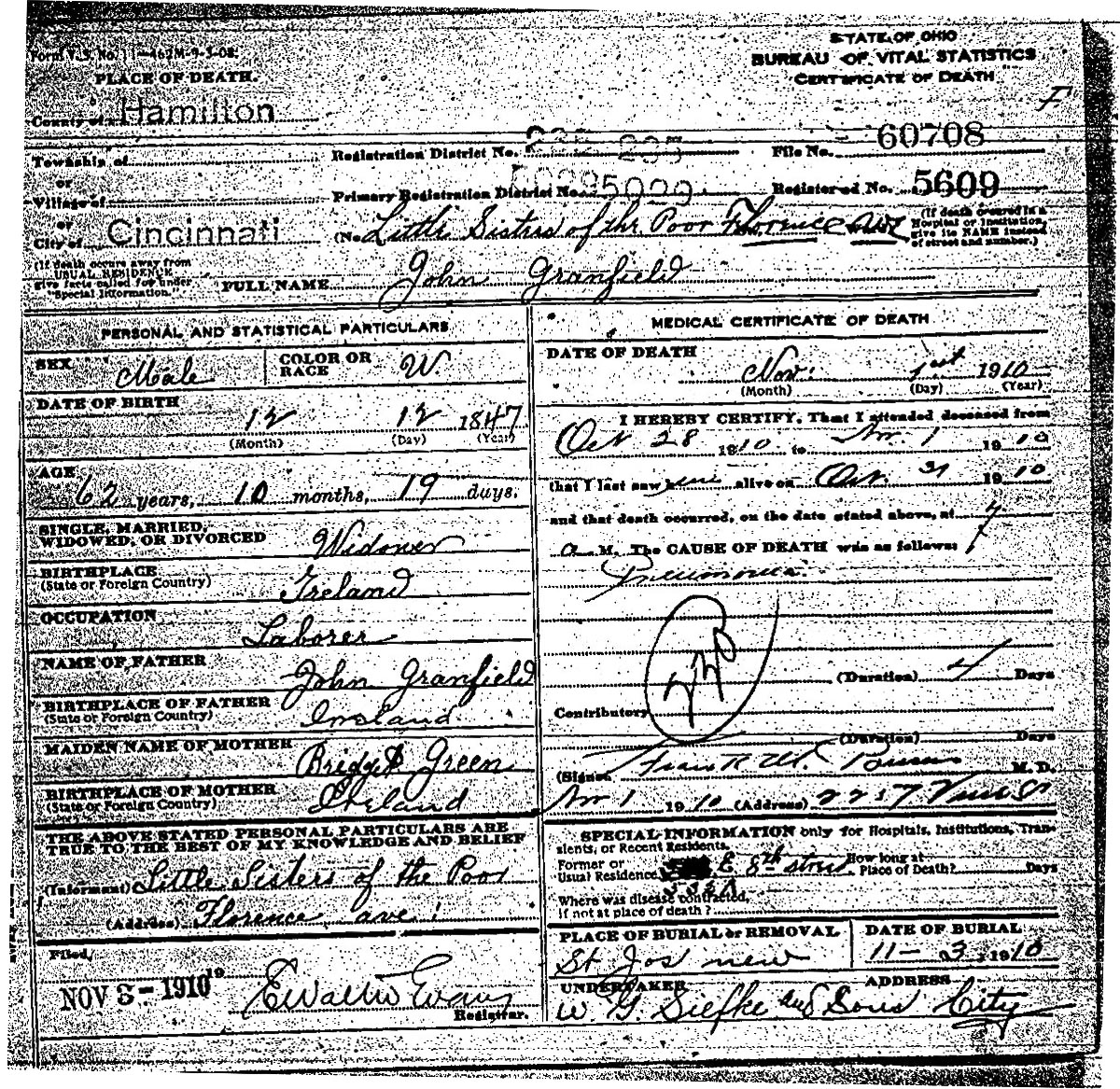 His burial place was listed as St. Joseph’s (New) Cemetery. St. Joseph’s (New) Cemetery’s microfiched records in the Public Library of Cincinnati and Hamilton County listed his parents as Wm [William] & Mary and his birthplace as “Co. Kerry.”[9]
His burial place was listed as St. Joseph’s (New) Cemetery. St. Joseph’s (New) Cemetery’s microfiched records in the Public Library of Cincinnati and Hamilton County listed his parents as Wm [William] & Mary and his birthplace as “Co. Kerry.”[9]

To determine if he indeed came over with two brothers, I searched for Granfields from County Kerry, Ireland, in his generation whose parents were listed as John and Bridget [last name sounds like “Green” or “Cream”]. The records of Highland County, Virginia, included a marriage record for Thomas Granfield and Margaret Doyle on 23 October 1860, which lists Thomas’s birth date as 1836 and his parents’ names as Jno. and Biddy.[10],[11] 
Biddy is a diminutive of Bridget.[12] The 1860 census in Highland County, Virginia, includes Thomas Granfield, age 22, born in “Cary” [sic].[13] 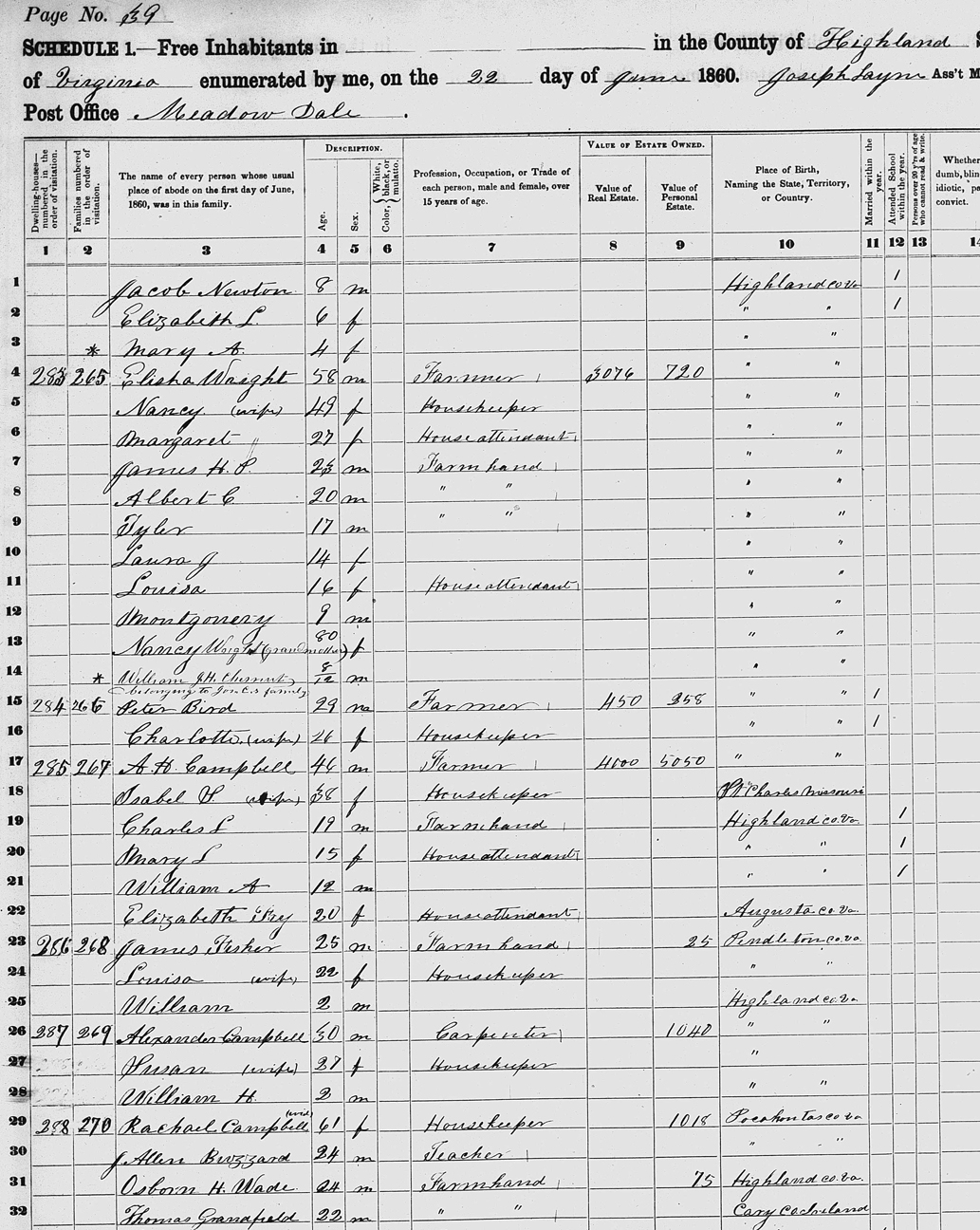 A death certificate for a William Granfield who died in San Francisco November 1911 listed his birth date as “Sept. 6th 1835” and parents as “John Granfield and Bridget McCone.”[14]
A death certificate for a William Granfield who died in San Francisco November 1911 listed his birth date as “Sept. 6th 1835” and parents as “John Granfield and Bridget McCone.”[14] 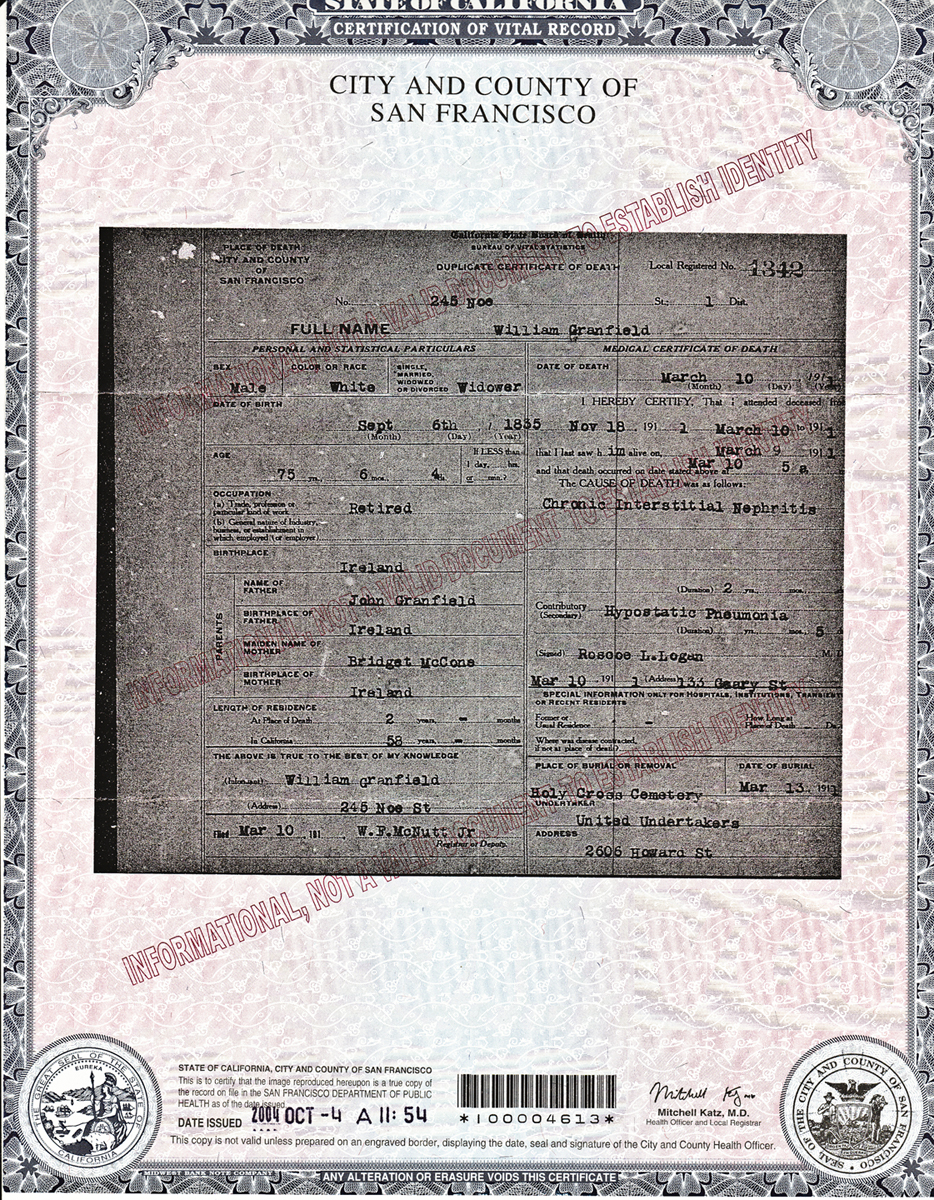
These were the only two exact matches in U.S. records. But Thomas’s mother Biddy showed no last name, and William’s mother’s last name McCone did not sound like Green or Cream, so I turned to Irish records.
John Granfield and Bridget McCrohan married 15 February 1825.[15] 
They had Mary in 1825,[16] Patrick in 1828,[17] Thomas in 1830,[18] John in 1833,[19] and William in 1836.[20] A John Granfield and Bridget Connor had a son Michael 04 April 1810.[21] A John Granfield married Bridget O’Donnell, but not until 1867.[22] The record trail left me with a highly probable but not air-tight theory that these three were brothers, sons of John Granfield and Bridget McCrohan.
The “proof” that I could not find in records came from a personal communication. A distant relative with whom I connected in my genealogy research found among the objects of her grand-aunt (a granddaughter to my original immigrant) a letter from San Francisco, dated March 31, 1911. It began “Dear cousins.” It was signed by two of William’s daughters, advising the Cincinnati branch about the death of William (“our father”) soon after the death of “your father” (John, my original immigrant and g-g-grandfather).[23] So I could safely assume that the three were brothers.
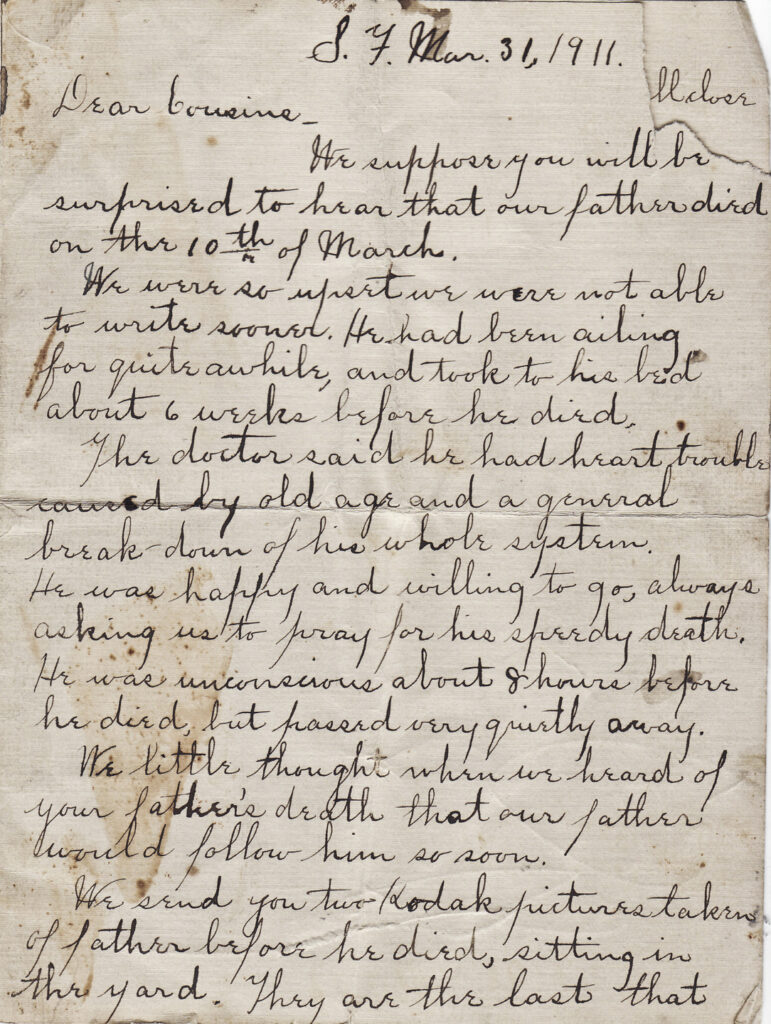
The records supported the oral history that one of John’s brothers went east (Thomas in Virginia) and one went west (William in San Francisco). One of William’s descendants wrote that branch’s oral tradition that William enlisted in the confederate army during the U.S. Civil War and refused to carry a rifle because he knew that his brother was in the northern army and he did not want to accidentally shoot him. William (the oral tradition continues) was made a cook and was captured by the Union Army, who sent him to The Presidio in San Francisco as a prisoner of war.[24],[25] I could find no proof that the Presidio housed confederate prisoners, but that branch’s legend supports the variant of the story that one “went” [was in the army of the] north while one “went” south.
II.
So had the three brothers come over “together”?
My original immigrant’s restored naturalization papers (the original was allegedly burned in the 1894 fire of Cincinnati’s Court House) stated that he emigrated in September of 1854.[26] 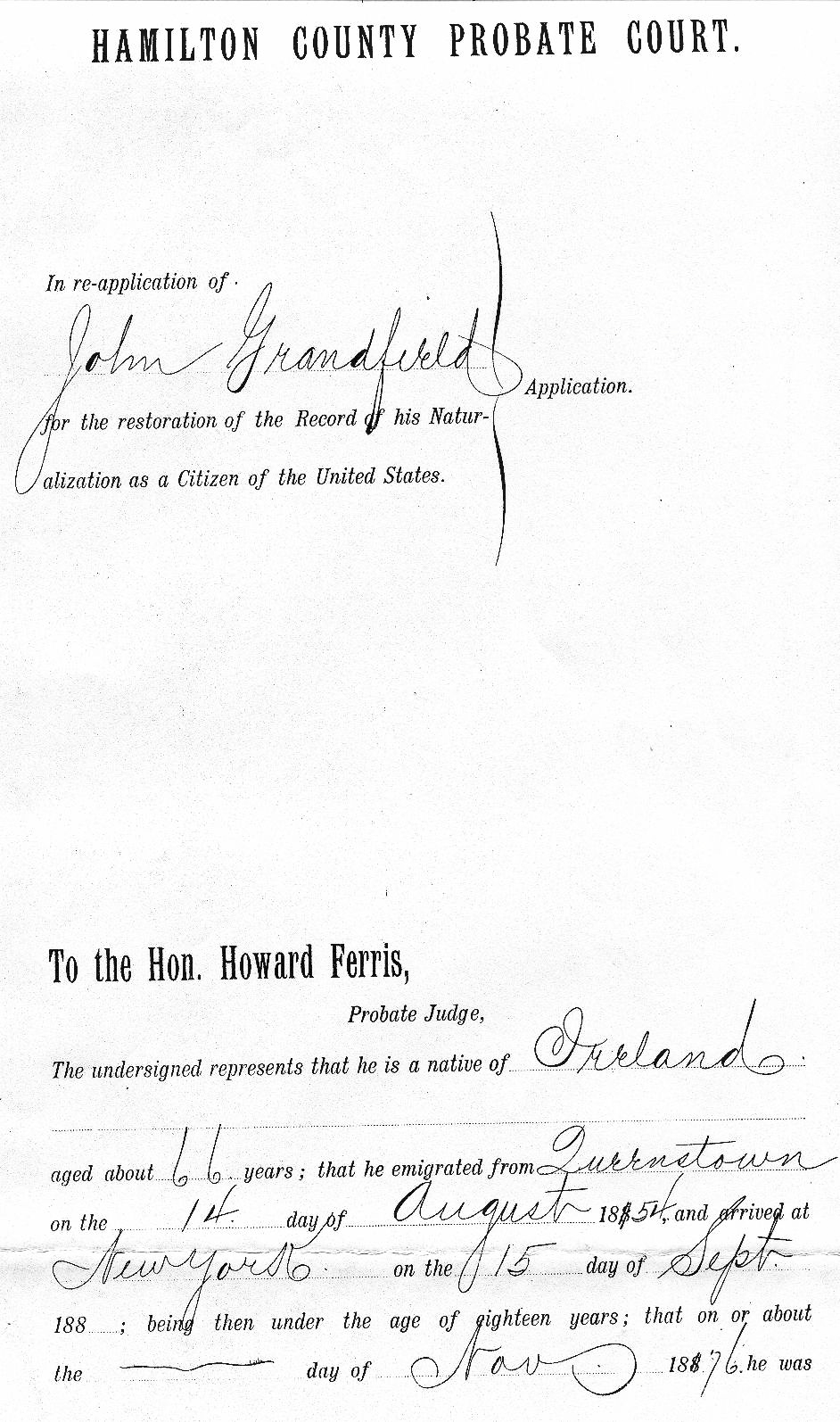
A John Granfield arrived aboard the Isaac Wright on 09 September 1854 at New York.[27] The convergence of those two facts suggests that this is one and the same person.
There are no Thomases or Williams with him. The closest Granfield male arrival is a Richard Granfield arriving 20 May 1854.[28] Through research, I know that he is not a brother going by a different name. The closest arrival with three males is 28 Aug 1856 aboard the Martha J. Ward: Thomas Granville, age 20; John Granville, age 18; Thomas Granville, age 3; Catharine Grandfield, age 35; Thomas Grandfield, age 20. William claimed to have immigrated 1855.[29] (He also claimed to have immigrated 1850,[30] but this would mean he went over to the U.S. and found passage back to Ireland before age 15 to be in court in 1853.) No immigration record could be found for a William Granfield 1854-1860 that was not already accounted for in another Granfield branch.[31] No immigration date is known for Thomas other than before 1860; he died in San Francisco in 1886 before censuses recorded immigration years,[32] and his immigration date is not listed in his obituary or death certificate.
The part of the story about the three brothers immigrating “together” did not apparently mean on the same ship in this case.
III.
So were they kicked out of Ireland for ringing the bells on a Sunday? Assuming that the phrase implied involvement with the penal system, I searched “Ireland Prison Registers, 1790-1924.” I found entries in 1853 for William Granfield, birth: 1839; John Granfield, birth: 1837; and Thomas Granfield, birth: 1837. They had been charged respectively with “Absconding From The Dingle W House [Work House] & C.”; “Absconding From W H.”; and “Absconding & Taking Away W H Clothing.”[33],[34],[35]


The correlations of names and birth years to the birth order of my original immigrant and his brothers, along with the similarity in charges, strongly supports that these are the “three brothers” from family legend. They were not kicked out for “ringing the bells on a Sunday,” but they did leave Ireland after being arrested for absconding with work house clothing.

Summary
Ignoring the “red flag” that my family’s legend of my original immigrant being one of three brothers separated upon arrival in the United States was widespread and often unprovable led me to learn much about my ancestors, including what in our variant of the legend was true (there were three brothers; they were all arrested, and his brothers ended up in the west in San Francisco and the east in Virginia) and probably untrue (unprovable): “together” did not apparently mean on the same ship, and the reason they left (were kicked out?) was not “ringing the bells,” though they did leave after being arrested for a crime.
The Three Brothers legend may be widespread because the story itself is a script or template onto which families can project their specific family history details. Families with this legend (and/or others) would do well not to dismiss them merely because they are widespread or sometimes or in some ways “untrue.” Parts of them may also be “true” and may lead to genealogical discoveries otherwise missed.
[1] Stubbs, Charles. The Kirk Family. Lancaster, PA: Wylie and Griest, Inquirer Printing House. 1872, p. 1. Also available at: https://archive.org/details/historicgenealogy00stub.
[2] Hopkins, E. W. The Fountain of Youth, Journal of the American Oriental Society, Vol. 26, p. 18, 1905.
[3] Carmack, Sharon DeBartolo. Family Legends and Myths: Watching Out for Red Flags, Genealogy.com. [accessed March 20, 2017] Available at http://www.genealogy.com/articles/research/90_carmack.html
[4] Green A. Individual Remembering and ‘Collective Memory’: Theoretical Presuppositions and Contemporary Debates. Oral History. 2004;32(2):35-44.
[5] Abram D. The spell of the sensuous: perception and language in a more-than-human world. New York, NY: Vintage Books; 1997.
[6] John Granfield [filed as “Greenfield”]. 1910 U.S. Census, OH, Hamilton County, Cincinnati, NARA microfilm T624, Roll 1189, ED 45, Sheet 9A, Household Number 2042 of Little Sisters of the Poor, Line 16, Greenfield, John.
[7] Little Sisters of the Poor letter. John Granfield (Letter from Archbishop Leibold Home, Little Sisters of The Poor, 465 Riddle Rd., Cincinnati, OH 45220); dated September 30, 1999; Grandfield Family Collection, privately held by Kevin Grandfield. [This letter is signed by Juliane M. Buck, Medical Records Secretary.]
[8] Ohio Bureau of Vital Statistics. Death Certificate. Registration District 235. File No. 60708. Registered #5609. John Granfield, November 11, 1910. Grandfield Family Collection, privately held by Kevin Grandfield.
[9] St. Joseph New Cemetery Assoc., Cincinnati, Ohio record [microform]. Dayton, OH: Wright State University, 1967. Public Library of Cincinnati and Hamilton County, Cincinnati, Ohio, Call Number: MF929.509771 S1431Zs 1967.
[10] Morton, Owen Frederic. A History of Highland County, Virginia. Roanoke, VA: The Stone Printing and Manufacturing Co. 1911. p. 280.
[11] “Virginia Marriages, 1785-1940,” database, FamilySearch (https://familysearch.org/ark:/61903/1:1:X51P-R4V : 5 December 2014), Thomas Grandfield and Margaret Doyle, 23 Oct 1860; citing Highland County, Virginia, reference 93 – 20; FHL microfilm 2,048,457.
[12] Behind the Name. “Biddy” (https://www.behindthename.com/name/biddy) [Access date March 21, 2017].
[13] 1860 U.S. Census, VA, Highland County, Meadow Dale P O, NARA Roll 1354, p. 219. Household Number 270 of Campbell, Rachel. Grandfield, Thomas.
[14] California Bureau of Vital Statistics. Death Certificate. #1342. William Granfield, March 10, 1911. Grandfield Family Collection, privately held by Kevin Grandfield.
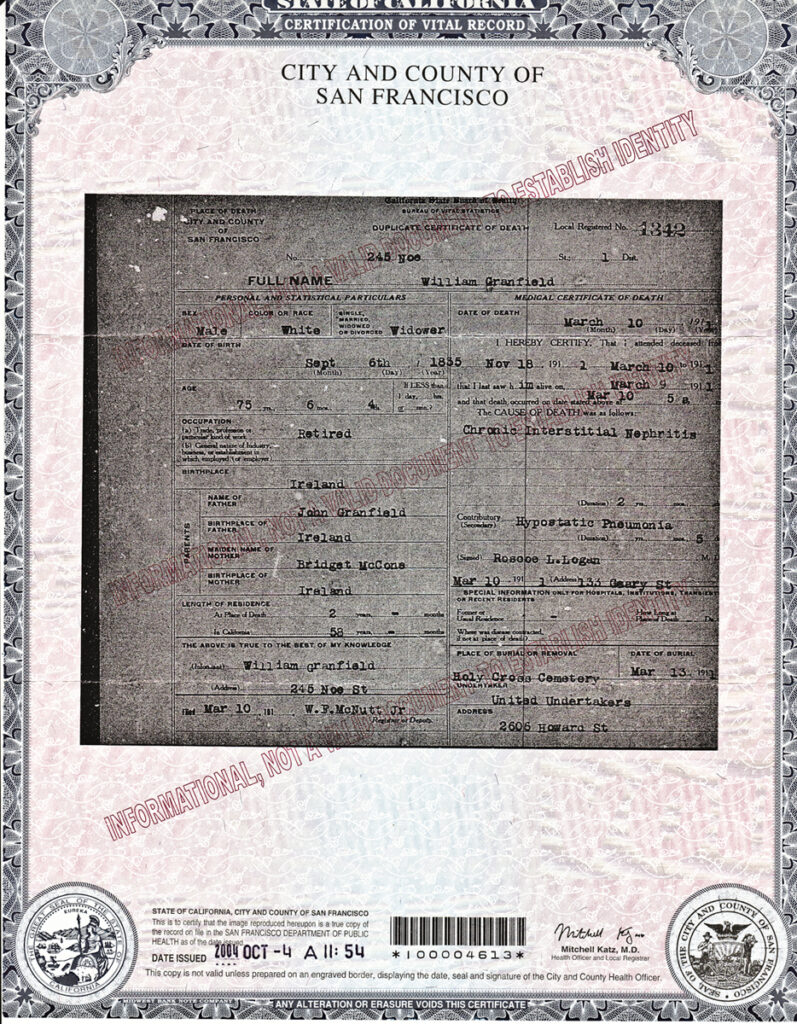
[15] “Catholic Parish Registers at the NLI.” Joannes Grandfile and Brigida Crohon. 15 February 1825. Kilmelchidar Microfilm 04274/10, p. 36, Aug 1824 to Feb 1825. Image available at http://registers.nli.ie/registers/vtls000634247#page/36/ [Access date March 21, 2017].
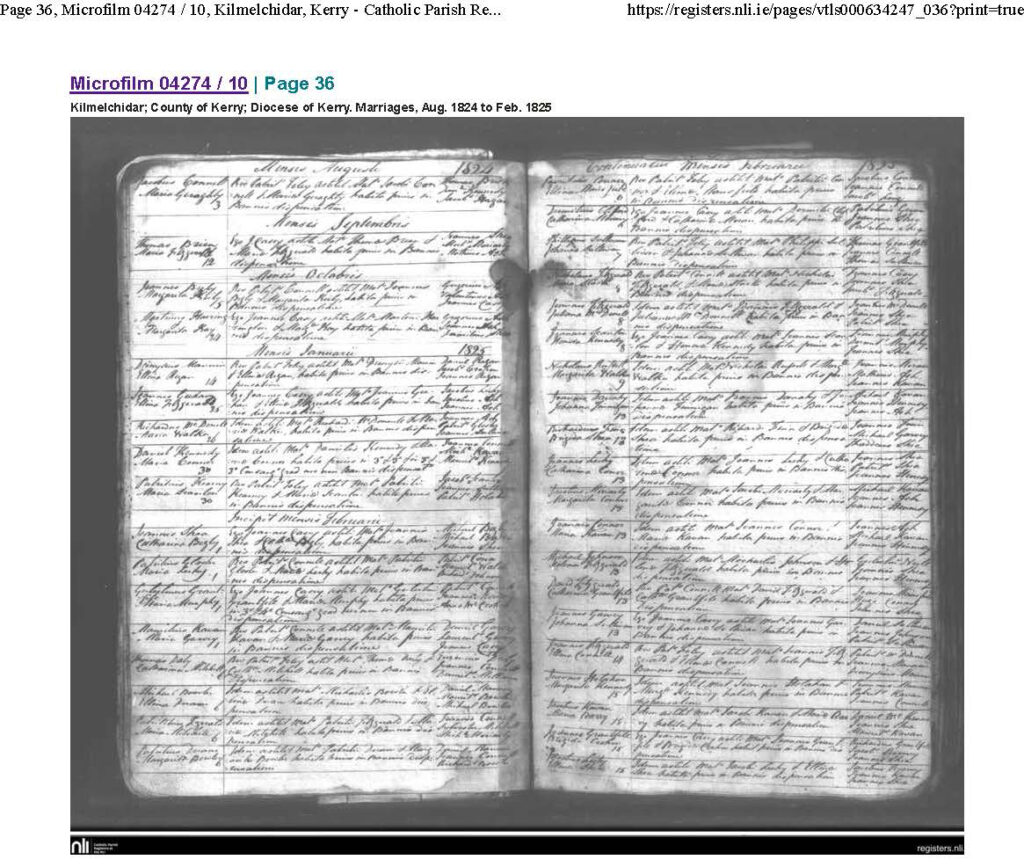
[16] “Catholic Parish Registers at the NLI.” Maria Grandfile. 31 December 1825. Kilmelchidar Microfilm 04274/10, p. 156, Nov. 1825 to Dec. 1825. Image available at http://registers.nli.ie/registers/vtls000634247#page/156 [Access date March 21, 2017].
[17] “Catholic Parish Registers at the NLI.” Patrick Grandfile. 20 March 1828. Kilmelchidar Microfilm 04274/10, p. 169, Jan. 1828 to Apr. 1828. Image available at http://registers.nli.ie/registers/vtls000634247#page/169 [Access date March 21, 2017].
[18] “Catholic Parish Registers at the NLI.” Thomas Grandfile. 30 May 1830. Kilmelchidar Microfilm 04275/01, p. 14, May 1830 to Aug. 1830. Image available at http://registers.nli.ie/registers/vtls000634248#page/14 [Access date March 21, 2017].
[19] “Catholic Parish Registers at the NLI.” John Grandfile. 19 May 1833. Kilmelchidar Microfilm 04275/01, p. 29, May 1833 to July 1833. Image available at http://registers.nli.ie/registers/vtls000634248#page/29 [Access date March 21, 2017].
[20] “Catholic Parish Registers at the NLI.” Gulielmus Grandfile. 06 September 1836. Kilmelchidar Microfilm 04275/01, p. 42, Aug. 1836 to Oct. 1836. Image available at http://registers.nli.ie/registers/vtls000634248#page/42 [Access date March 21, 2017].
[21] “Catholic Parish Registers at the NLI.” Illegible. Kilmelchidar Microfilm 04274/10, p. 60. Image available at http://registers.nli.ie/registers/vtls000634247#page/61 [Access date March 21, 2017].
[22] “Catholic Parish Registers at the NLI.” Johannes Granville and Brigidae O’Donnell. 09 February 1867. Kilmelchidar Microfilm 04275/02, p. 55, Nov. 1865 to Feb. 1867. Image available at http://registers.nli.ie/registers/vtls000634249#page/55/ [Access date March 21, 2017].
[23] John Granfield (Letter from Jennie and Loretta Granfield); dated March 31, 1911; Grandfield Family Collection, privately held by Kevin Grandfield. [This letter is signed by Your loving cousins, [para] Jennie and Loretta Granfield [para] 245 Noe St. [para] San Francisco.]
[24] William Granfield (Letter from Larry Granfield to Patricia Granfield); dated February 14, 1995; Grandfield Family Collection, privately held by Kevin Grandfield.
[25] That oral legend in turn is troublesome trying to prove. All matching William Granfield or variant (e.g., Cranfield, Greenfield) found in Confederate (or subsequently Union) records could be disproven as matches. However, Confederate records were abundant for John Granfield who signed in at Monterrey, VA (near where the brother Thomas had been married in 1860) and served in the Virginia 25th (Heck’s). [Armstrong RL. 25th Virginia Infantry and 9th Battalion, Virginia Infantry. Grandfield (Granfield) John, p. 164. Lynchburg, VA: H. E. Howard, Inc., 1990.] His entry ends with ” AWOL since 8/9/62. Ab. 1/1/64-4/30/64, des. and gone to the enemy. Moved west after the war. NFR.” This would almost assuredly be my original emigrant, but the oral legend of the branch descended from William and the vague “went west after the war” introduces doubt. John was married in 1863 in Richmond, Indiana (“west” of Virginia and “after” his service ended) and William is first noted in San Francisco in the great registers of California 1867 (farther “west” of Virginia and “after” the actual war ended). Nevertheless, the east and west variant of the story is supported.
[26] Hamilton County Probate Court. Restored Records of Naturalization. No. 3708. Vol. 12, Page 265. Filed May 9, 1900. John Grandfield. Available at https://www.probatect.org/recordsearch/tif2pdf/ConvertBookToPdfA2-hcpc1-1580.asp?vol=12&page=265&tipepath=NatRstdBks&BukTipe=NatRstdBks&lpg=590&image=xxr.dtl/Books\NatRstdBks\00000012\XXXXXXXXX00000265.tif&msa=V&FirstPage=&VolDesc=&SelectedIndex= [access Date April 26, 2017].
[27] “New York Passenger Lists, 1820-1891,” database with images, FamilySearch (https://familysearch.org/ark:/61903/1:1:QV33-844B : 15 April 2015), John Grandfield, 1862; citing NARA microfilm publication M237 (Washington, D.C.: National Archives and Records Administration, n.d.); FHL microfilm.
[28] “New York Passenger Lists, 1820-1891,” database with images, FamilySearch (https://familysearch.org/ark:/61903/1:1:275Y-NMQ: 15 April 2015), Richard Granfield, 1854; citing NARA microfilm publication M237 (Washington, D.C.: National Archives and Records Administration, n.d.); FHL microfilm.
[29] 1900 U.S. Census, San Francisco, San Francisco County, California microfilm T623, ED 36, Sheet 13B, Household Number 285 of William Granfield, Line 79, Grandfield, William.
[30] 1910 U.S. Census, San Francisco, San Francisco County, California microfilm T642, Roll 97, ED 92, Sheet 5B, Household Number 129 of William A. Granfield, Line 97, Grandfield, William.
[31] Grandfield K. Supplement (2012) to Granfields of Ireland to Grandfields of America. 2012. Newberry Library, Chicago, Illinois, Call No. folio CS71.G8185 2012.
[32] California Bureau of Vital Statistics. Death Certificate. #G35. Thomas Granfield, November 20, 1884. As cited by http://www.rootsweb.com/~cabf1905/San-Francisco/SFBG.htmGrandfield. Accessed May 25, 2017.
[33] “Ireland Prison Registers, 1790-1924,” database with images, FamilySearch (https://familysearch.com: accessed 15 April 2017), William Granfield, 1853; from “Irish Prison Registers 1790-1924,” database and images, citing Tralee Prison General Register 1852-1866, item 4, book 1/36/1.
[34] “Ireland Prison Registers, 1790-1924,” database with images, FamilySearch (https://familysearch.com: accessed 15 April 2017), John Granfield, 1853; from “Irish Prison Registers 1790-1924,” database and images, citing Tralee Prison General Register 1852-1866, item 4, book 1/36/1.
[35] “Ireland Prison Registers, 1790-1924,” database with images, FamilySearch (https://familysearch.com: accessed 15 April 2017), Thomas Granfield, 1854; from “Irish Prison Registers 1790-1924,” database and images, citing Tralee Prison General Register 1852-1866, item 4, book 1/36/1.

I suggest listing locations: country, state/province, county/region, city. My reasons:
(1) When starting genealogy, I knew only what country my original emigrant was from; I had to learn each more precise location over time: first the county, then area, then exact town. If your ancestor is for Ireland, like mine, you end up with the place name:
Ireland, Kerry (County), Corkaguiny (Barony), Ballyferriter (Catholic Parish), Kilquane (Civil Parish), Ballybrack (townland).
(2) People read from left to right, and there are towns with the same names in many different counties, states, and countries. At first glance, you wouldn’t know Columbia, Boone County, Missouri, U.S.A. from Columbia, Charters Towers, Charters Towers Region, Queensland, Australia. With my system, you could differentiate right away between Australia and U.S.A.
(3) As you search for extended family, you can differentiate between Griffins in Ireland’s Kerry County vs. Ireland’s Wicklow County.

I suggest filing dates as YYYY MM-DD. 
If, like me, you use Microsoft Office tools such as Word and Excel to keep track of your genealogy info, the software does not always keep track of dates as dates but rather as text. Sorting dates in the format above will result in a continuous timeline when using Office’s internal “Sort” tool.
1900 12-30
1901 01-
1902
Sometimes you know a year without a month, or a month but no date. Using a different divider between month and date allows you to do searches based on year and month:
Looking for a record in January 1900? Search 1901 01-
Looking for a record of December 30 but don’t remember the year? Search 12-30
